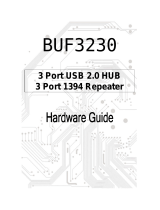
Table of contents
Hardware Upgrades
Warnings and Cautions ........................................................................................................................ 1
Additional Information ........................................................................................................................... 1
Unlocking the Smart Cover Lock .......................................................................................................... 2
Smart Cover FailSafe Key ................................................................................................... 2
Using the Smart Cover FailSafe Key to Remove the Smart Cover Lock ............................. 2
Removing the Computer Access Panel ................................................................................................ 4
Replacing the Computer Access Panel ................................................................................................ 5
Removing the Front Bezel .................................................................................................................... 6
Removing Bezel Blanks ....................................................................................................................... 7
Replacing the Front Bezel .................................................................................................................... 8
Installing Additional Memory ................................................................................................................ 9
DIMMs ................................................................................................................................. 9
DDR3-SDRAM DIMMs ........................................................................................................ 9
Installing DIMMs ................................................................................................................ 10
Removing or Installing an Expansion Card ........................................................................................ 12
Drive Positions ................................................................................................................................... 16
Removing a Drive from a Drive Bay ................................................................................................... 17
Installing Additional Drives ................................................................................................................. 21
Installing a 5.25-inch Drive into an External Drive Bay ...................................................... 22
Installing a 3.5-inch SATA Hard Drive into an Internal Drive Bay ...................................... 24
Removing and Replacing a Removable 3.5-inch SATA Hard Drive .................................. 26
Changing from a Minitower to a Desktop Configuration ..................................................................... 31
Changing from a Desktop to a Minitower Configuration ..................................................................... 34
Battery Replacement .......................................................................................................................... 37
Installing a Security Lock .................................................................................................................... 40
HP/Kensington MicroSaver Security Cable Lock ............................................................... 40
Padlock .............................................................................................................................. 40
HP Business PC Security Lock .......................................................................................... 41
Front Bezel Security .......................................................................................................... 42
Appendix A Electrostatic Discharge
Preventing Electrostatic Damage ....................................................................................................... 45
Grounding Methods ............................................................................................................................ 45
ENWW v




















